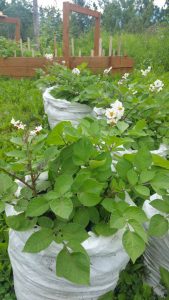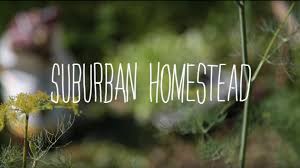The Stomach of Necessity
The quickest way to someone’s heart is through their stomach. As someone who has worn many hats in the field of healthcare, and has passed a human anatomy class, I take issue with this phrase. However, as someone who spends the better part of their time either thinking or talking about food, I could not agree more.
I began the process of learning to cook at the age of about 10. I was fed up with canned green bean casserole, and determined to exert more control over the contents of my stomach. I started out small: making fruit juice from frozen concentrate, then toast, then ramen, and eventually eggs and chicken. Which came first, the chicken or the eggs, I cannot recall. It was not until high school that I had the opportunity to take my first culinary class, after which I was hooked: taste buds, stomach, and all. Intertwined with the timeline of a growing interest for gastronomic exploration, an equal passion was germinating beneath the surface.
Plant-life
As a young child, the indoors were not for me. I have memories of running barefoot through the grass, licking pollen off of dandelions, and eating rose hips and raspberries. We moved back and forth between Alaska and Washington state a few times growing up. Alaska was a wintry wonderland. But it was in Washington with its thickets of blackberries, apples, plumbs, huckleberries, and a host of other edible low hanging fruit, that I first discovered a love for plants. The curriculum in the school I attended had a botanical element that was lacking from my education later in life, a thousand miles away in Alaska.
In my Washington grade school, we were often outside for science lessons. I can still recall the day we learned about compost. As I plunged my young hands into the seemingly insignificant pile of yard waste, I was shocked at the heat that radiated from within. Was it from the hot sun? No, it was too hot for just the sun. I was amazed to learn how simple bacteria could cause a pile of wood chips to heat up to such extreme temperatures. We drew pictures of flowers we found in the forest. We learned about medicinal plants as well, which led me to an exploration of local medicinal herbs. There is a direct link between food and health. “Let food be thy medicine and medicine be thy food,” to quote Hippocrates.
Inspirational Gardening
My wife and I both experience the difficulties associated with having food allergies. I have often reacted allergically to things bought from a store. With a list of ingredients a mile long, one can easily miss hidden allergens. Knowing what goes into what my family eats is important. What better way is there to be certain of what ingredients are included than to grow and cook food myself? Could I grow nutritious food that my family would eat? I have limited space, and little-established habit, knowledge, or tools for doing so. The first step for me was to plant a seed: one comprised of motivation, some allotted time, and a whole lot of inspiration.
For me and mine, inspiration took the form of a raised bed with a host of vegetables we knew how to cook with. We took some tips and encouragement from a Youtube channel called Suburban Homestead which instructed us on how to use cardboard as a biodegradable suppressor for grass and weeds. We also learned to inter-plant our lettuce with collards or other tall greens to protect the more delicate lettuce from sunburn. I found many other inspiring techniques and tips on this same channel. I often refer back to it, looking for those tips, as well as the unique recipes that are incorporated into many of the videos.
I first came across the Suburban Homestead YouTube channel while searching for information on the life cycle of potatoes. What I discovered, was a diverse, enjoyable, and easy to understand resource for inspiring techniques in gardening. Suburban Homestead is an experience-based gardening journal which catalogs one man’s journey in his quest for a sustainable, environmentally friendly, and hassle-free garden. In his videos, he shows what can go wrong as well as how things go right. I love how both success and failure are included and explained. One can often learn more from failure than from success alone. The creator, Siloé Oliveira, an artist-animator who grew up in Sao Paulo, Brazil, and now lives and gardens in Baltimore, Maryland, uses his skills in art, animation, cooking, gardening, and video production to produce this delightful series. From seed saving and starting seeds to tips for combating specific problems associated with the way certain plants grow, I find it’s format exciting, well thought out, and not overly specific to hardiness zone. It is a long way between Alaska and Maryland, and while both places present with unique challenges, I believe many of the techniques, as well as much of the knowledge you will find in this video journal, can be applied to Alaska.
 Learning how to garden can seem overwhelming. And for someone with a busy schedule, devoting time to the care and tending of plants can sometimes take a backseat to things more instantly gratifying and fulfilling to their daily needs. The slow personal growth and life enrichment provided by gardening, either for the beauty or sustenance, is not something that can be experienced or cultivated in an instant. So when first starting out in the learning process, the right blend of inspiration to information is important in keeping interest from burning out. Suburban Homestead for me has been one fun and informative way that I find inspiration.
Learning how to garden can seem overwhelming. And for someone with a busy schedule, devoting time to the care and tending of plants can sometimes take a backseat to things more instantly gratifying and fulfilling to their daily needs. The slow personal growth and life enrichment provided by gardening, either for the beauty or sustenance, is not something that can be experienced or cultivated in an instant. So when first starting out in the learning process, the right blend of inspiration to information is important in keeping interest from burning out. Suburban Homestead for me has been one fun and informative way that I find inspiration.
So get started, and start with something achievable. Perhaps, it’s sowing some seed in whatever patch of dirt you can find, and seeing what takes root. Learn from your mistakes. Try something different or strange. Most of all tailor your gardening projects to your interests and needs.
I do not recall where I heard it, but I once was told that someone with 40 years of experience in growing potatoes has only had 40 attempts at growing them. For me, that reinforced the importance of learning from others. When we learn from the experience of others, we can greatly increase our success at growing things in the short number of attempts we have available to us while on this earth. When we attempt things and share with others, we also increase their chances of success. In Alaska, due to our shorter growing seasons, the importance of learning from others is only further increased. We don’t have the same luxuries to mess around with things that do not work. Time is short and winter is coming.

